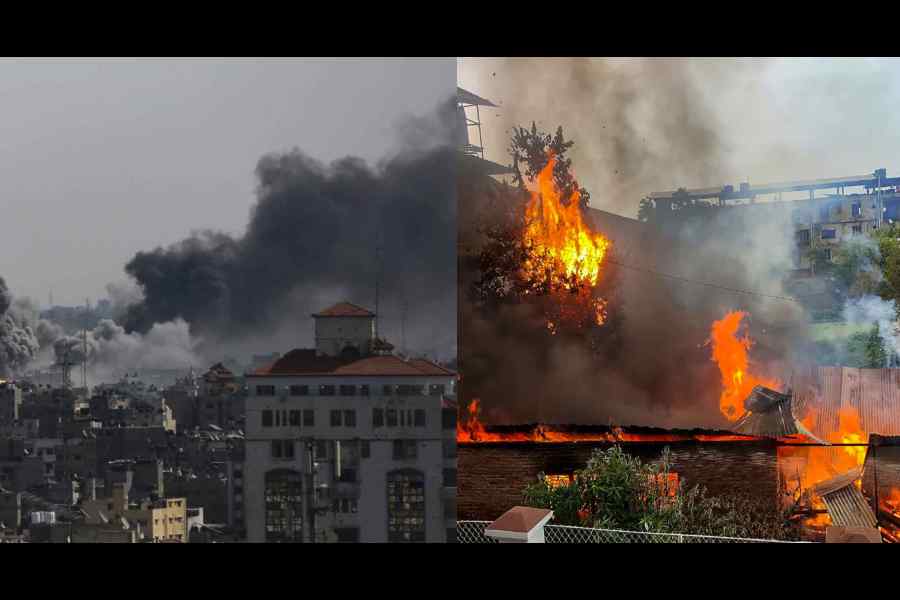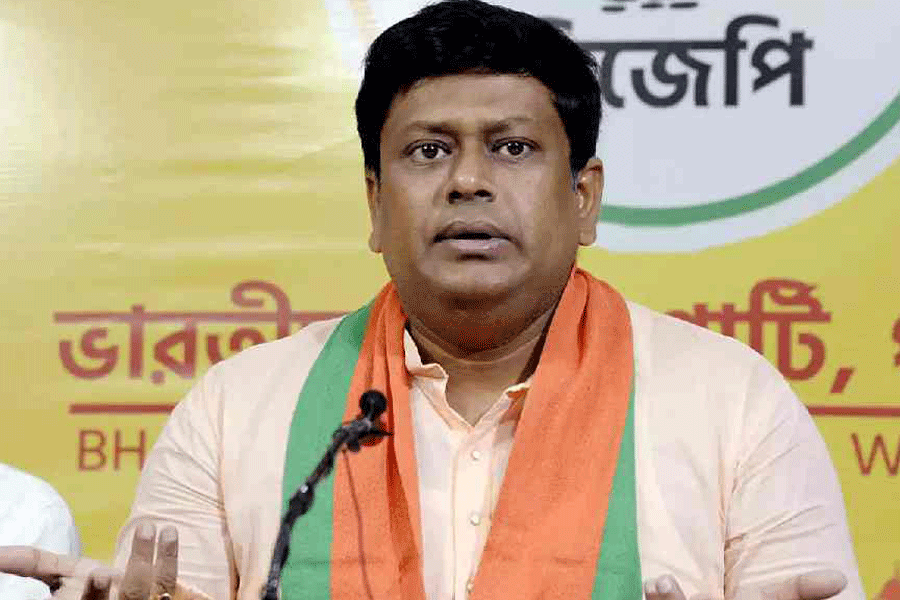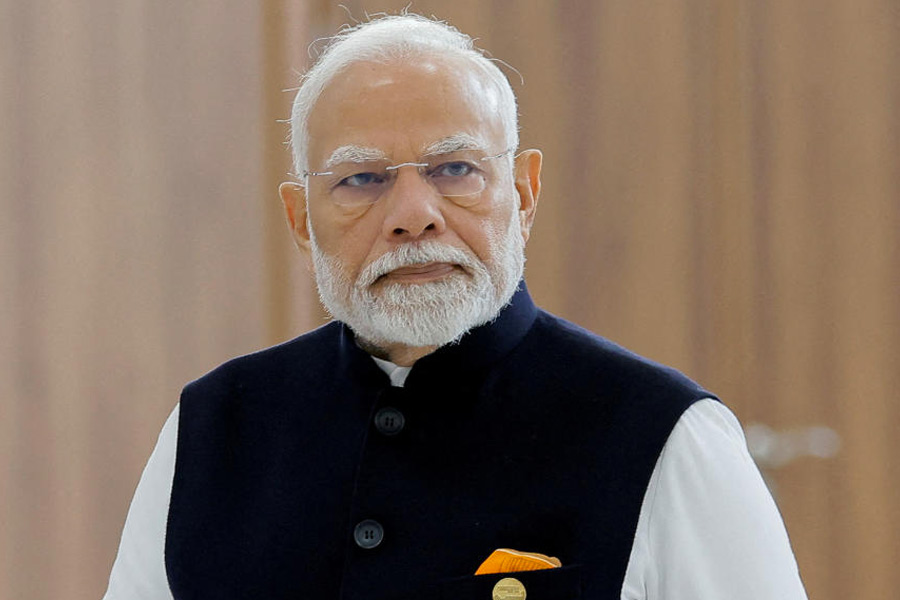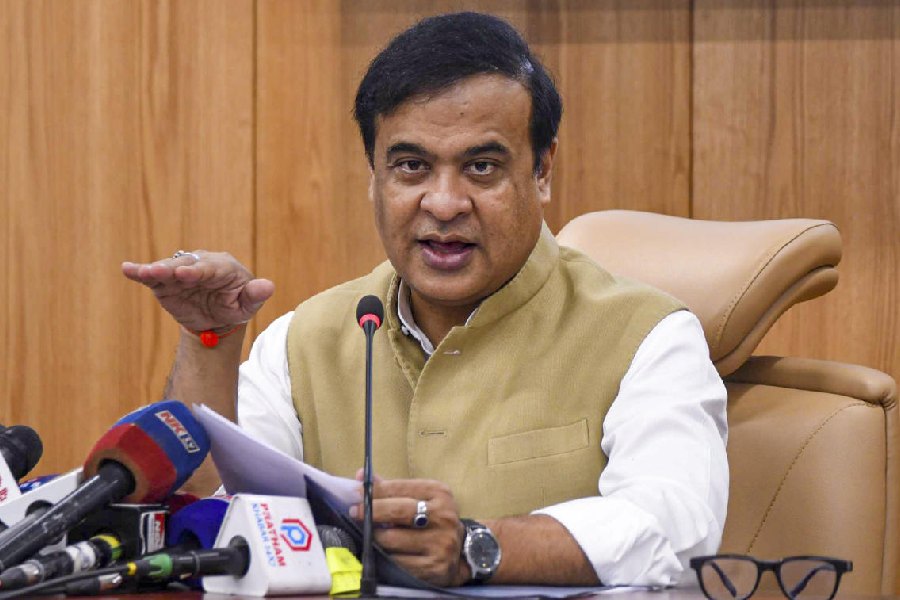Every long-running, big-news story becomes a comment on how the media operates and the role it chooses to either play or abstain from. It also tells you how the principal players in a conflict learn to use media platforms to create their own narratives. The latter is currently true of the conflict in Israel and the mostly invisible one in Manipur.
Ever since it exploded, the Hamas-Israel conflict has unleashed a perception war — primarily in the Western media. Professionals and newsrooms tried to balance the biases of owners (including Jewish-owned and Arab-owned media) and the commercial calculations of what audiences want to hear with the stories they wanted to tell, even as they were severely constrained by the situation on the ground in Gaza.
Deaths and casualties have quickly piled up. As of October 18, at least 17 journalists have been killed — 13 Palestinian, 3 Israeli, and 1 Lebanese — in the 11 days since the conflict began, the majority of them in the retaliatory Israeli air strikes on Gaza. The regional programme coordinator of the Committee to Protect Journalists, Sherif Mansour, pointed to Israel’s targeting of media offices in Gaza in 2021 and the shooting of a Palestinian-American journalist by an Israeli soldier in 2022 to assert that cases like those have changed the risk calculations for international journalists. He told The Washington Post that they are increasingly leaving it to local photo and freelance journalists to do the job of covering the conflict in Gaza and the West Bank.
Right after the Hamas attack, the US networks’ star anchors were being flown across to the relative safety of Israel. Local journalists within the 140-square-mile Gaza Strip, meanwhile, were contending with the massive bombing campaign, electrical and internet outages, food and water shortages, and the psychological burden of reporting the unfolding humanitarian crisis while living it themselves.
Risk calculations apart, there was the question of what story the Western audiences wanted to hear. The New York Post reported that MSNBC lost 33% of primetime audience during the coverage of the Israel war, while those of Fox and CNN surged. It said the channel also saw its total viewer figures plunge 24% in the first four days of the conflict compared to the same period the previous week. MSNBC became controversial over the broadcasts of its three Muslim-American anchors when the 11-month-old news site, Semafor, reported that they had been taken off their anchoring duties because of the tenor of their comments. (The channel denied this.)
One point of criticism was the refusal to refer to Hamas attackers as terrorists. The other was the crisp recap of what life is like for the 2.2 million Palestinians in Gaza which provided context for the Hamas attack. But if the analyst, Mehdi Hasan, described this on MSNBC, it is because the anchor began the show by asking him to explain what life in Gaza is like when it is not in active conflict with Israel and not because he chose to be partisan.
Within American media newsrooms, there are now arguments about whether there can possibly be ‘bothsidesism’ for a conflict like this. Semafor reported an exchange between NBC Universal’s editorial and tech employees over whether a network should be providing ‘context’ “for burning babies in their beds.” As the war has played out, statistics on the murder of babies by both sides have been ghoulishly tossed around.
The BBC has carried graphic and contextualised coverage of life of the people living in the Gaza Strip, particularly now after the siege imposed by Israel. It also reported attacks on its reporters by the Israeli police. The Financial Times, meanwhile, was reporting that the BBC has taken six reporters in the Middle East off air and launched an investigation into posts on social media that seemed to support activities of Hamas against Israel. FT also reported Downing Street’s opposition to the broadcaster calling Hamas militants rather than terrorists. A fine balancing act was constantly being called for: FT also reported that The Guardian had pulled a cartoon by its veteran cartoonist, Steve Bell, on Benjamin Netanyahu. Through all this, the Israeli newspaper, Haaretz, founded in 1918, was squarely putting responsibility for the Israel-Gaza war on Netanyahu, which made it a rare and brave Israeli voice.
As for the role of platforms in the conflict, Poynter.org’s tracking of social media use by Israel and Hamas found that while Hamas was barred from Meta and X (formerly Twitter), it was using Telegram quite effectively, with its following more than tripling after the attack. The Telegram channel of Hamas’ military wing, al-Qassam Brigades, also saw a 10-fold increase in the number of views for its videos and content. It also operated another Telegram channel to post video messages from a Hamas spokesperson.
The Israeli government began a sweeping social media campaign in Western countries, pushing online ads containing brutal and emotional imagery of militant violence across platforms such as X and YouTube, with Politico tracking these. Poynter calls it a relatively new trend for governments to move aggressively online at times of crisis.
The big irony in India has been the privileging of this conflict over the long-running one at home in Manipur and the alacrity with which this country’s boundless news media took to despatching reporters to Israel after having ignored clashes, suffering and savagery in Manipur for more than five months. There are more pictures of refugees in camps in Gaza in our newspapers and television channels than there have been so far of refugees in Manipur.
So for perhaps the most vivid account to date you have to turn to an American newspaper. Last week, The Washington Post ran a long story datelined Churachandpur on what a blacked-out conflict in media-rich India actually looks like. It was titled, “India uses widespread internet blackouts to mask domestic turmoil”. It carried many vivid photographs of life in this region, pictures Indian media houses have not made any effort to capture as the conflict is midway through its sixth month. It described how on a recent evening, three Kukis gathered on a grassy hilltop bathed in moonlight to try and pick up a faint cell phone signal. No one knew if it came from the neighbouring state of Mizoram or from Myanmar, the story said. It described how the internet blackout makes people in this part of the state come to the hill for all kinds of reasons — to do homework, make payments, or download the latest information about the fighting — and how local activism involved using Nearby Share, a Bluetooth file-sharing app, to gather pictures of the many atrocities occurring here. The Indigenous Tribal Leaders’ Forum, a pro-Kuki organisation, uses volunteers to run its media cell and get these pictures out.
When something truly horrific comes out of Manipur, as in the case of the 26-second video showing Meitei men molesting and groping two naked Kuki women before raping them off camera, it jolts people into an awareness of what is playing out in that state. Even the prime minister was compelled to finally speak up. But since then, it has been blackout time again. Until the foreign media ventured in to bring life in this war zone alive again for the world.
Sevanti Ninan is a media commentator and was the founder-editor of TheHoot.org










